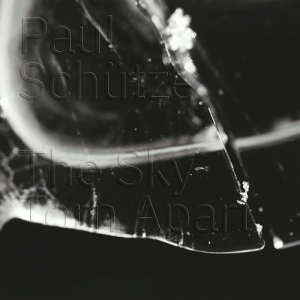 Paul Schutze is an Australian sound composer who has been producing music since the late 1980s. This album, his first in eight years, is released on the extremely apt Glacial Movements Records from Italy and is one long, gradually unfolding treasure that is almost like an attempt at prehistoric music; constructing sounds that pre-date what we understand and go back to the formation of the earth.
Paul Schutze is an Australian sound composer who has been producing music since the late 1980s. This album, his first in eight years, is released on the extremely apt Glacial Movements Records from Italy and is one long, gradually unfolding treasure that is almost like an attempt at prehistoric music; constructing sounds that pre-date what we understand and go back to the formation of the earth.
The dripping of water and the growl of tectonic plates gradually moving into position emerge slowly from a distant hum. The water is falling, constructing underground passages far from the surface, in the gloom of vast caverns. These seismic murmurings of subterranean activity are accompanied by a high but very subtle drone, like the release of air — or if you concentrate very hard, like the sound of a celestial choir –bestowing a sense of wonder on the slow transformation.
There is something primal about the sounds, as if this was all being produced while the universe was forming. Yet there is a poetry and subtlety here that draws the listener into this glimpse of nature at work: the constant trickle of distant water, an unravelling storm heard from some new perspective, a state of constant flux but one in which the movement is barely perceptible.
There is nothing apocalyptic at work here, no sense of destruction, more a sense of soothing discovery. It calms in the way listening to a distant thunderstorm can and the piece seems to reduce eons into minutes. A separate drone feels like sunlight from some distant body helping the process that this disc has begun. After twenty-five minutes, there are regular rhythmic movements, as if something huge is swaying, affected by gravity or some similar force; but these moments are interspersed by intense peace, with just the ever-present water keeping us in touch. Towards the end, clouds crack open, enormous peals of thunder and unknowable prehistoric sounds herald a point where the perspective draws away from wherever this is. It rather like the observations are now taking place at some great distance and the sounds that have drawn us here are gradually being subsumed by a vast silence.Paul’s original plan was for this piece to reflect parallels between real environmental transformation and the Nordic myths of Ragnarok, where the earth is subsumed by water. Whatever his intentions behind this work, The Sky Torn Apart goes way beyond what we consider as ambient and into some kind of summation of earth’s construction and rebirth, using digital processes that sound amazingly real.
It is delightful as an ambient piece, but at one point I was listening to it in the garden with birds singing in the trees and that just worked beautifully. The Sky Torn Apart is the sound of an environment and could probably work anywhere that there is peace.-Mr Olivetti-



